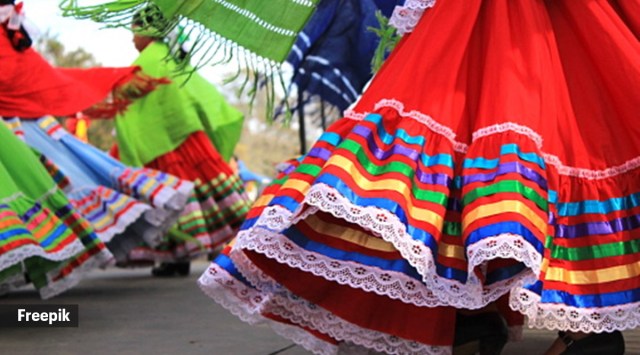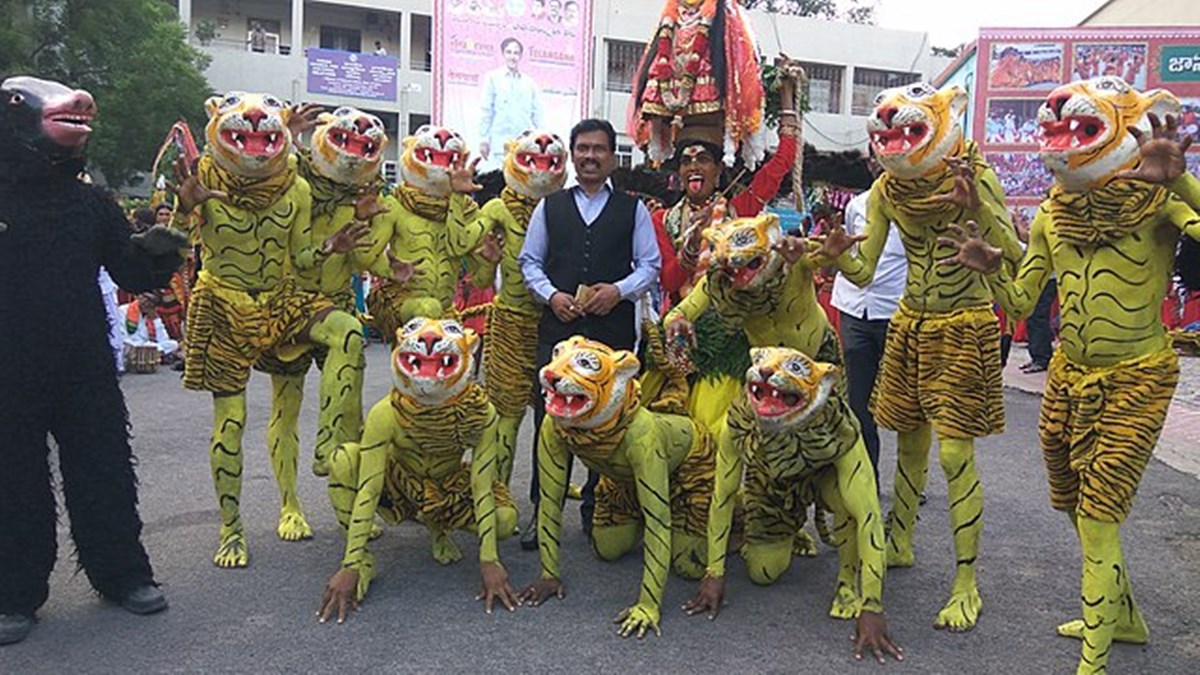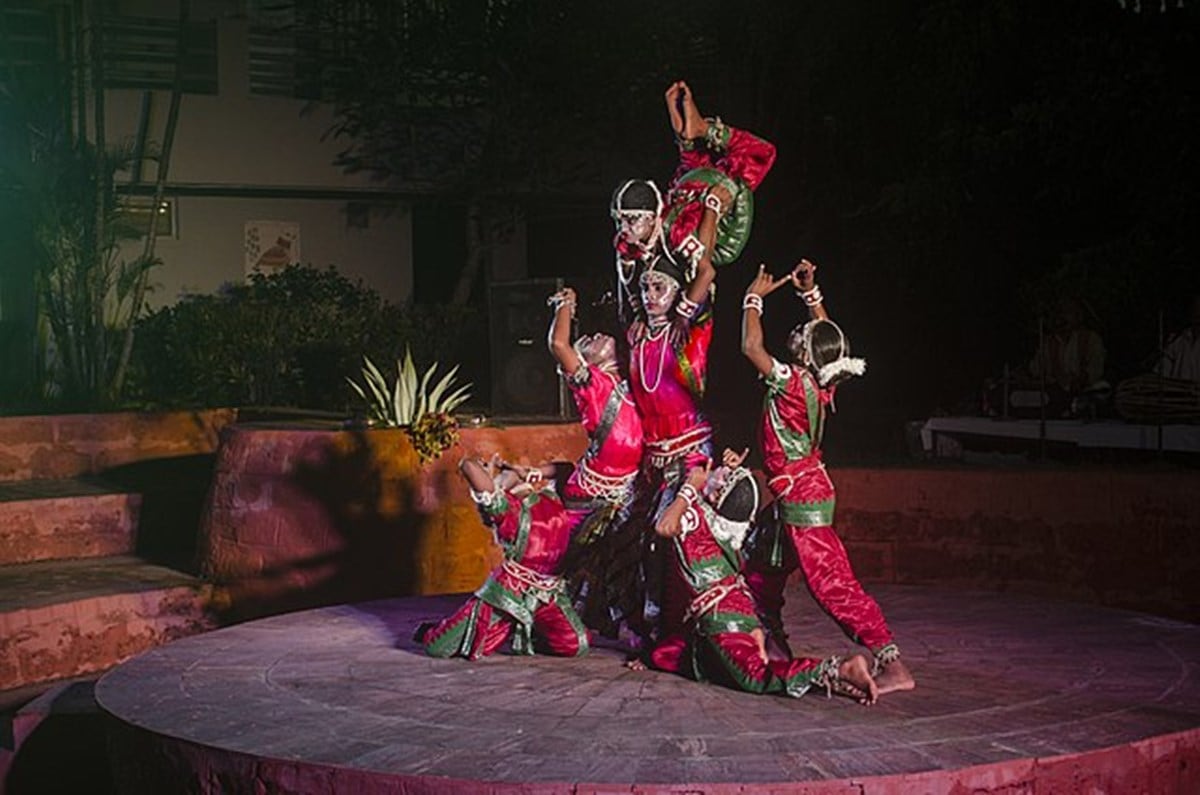📣 For more lifestyle news, click here to join our WhatsApp Channel and also follow us on Instagram
International Dance Day 2023: Here are 5 lesser-known folk dance forms of India
Folk dances are performed for every possible occasion--to celebrate the arrival of seasons, birth of a child, weddings and festivals. Each folk dance has a specific costume and rhythm.
 The day is observed to raise awareness of different dance forms and encourage people to participate in dancing activities. (Source: Freepik)
The day is observed to raise awareness of different dance forms and encourage people to participate in dancing activities. (Source: Freepik) International Dance Day is celebrated every year on April 29 to raise awareness of different dance forms and encourage people to participate in dancing activities. The Dance Committee of the International Dance Institute (ITI) organises celebrations across the globe.
Explaining the importance of the day, Geeta Chandran, Bharatnatyam Dancer and Padma Shri awardee said, “According to UNESCO, International Dance Day is a global celebration of dance, created by ITI, the main performing arts partner for UNESCO. The event takes place every year on April 29, which is the birth anniversary of Jean Georges Noverre, who is considered to be the ‘father’ or creator of modern ballet. In India, we mark the date to focus on the problems faced by the dance community, which has become more important since the pandemic hit performing artists badly,” adding that the day is a plea to the public at large to focus on what dance means to our culture and the responsibility of everyone to protect and promote it.
As such, Indian folk dances need our dire attention. Folk dances are performed for every possible occasion–to celebrate the arrival of seasons, the birth of a child, weddings and festivals. Each folk dance has a specific costume and rhythm.
“These dance forms need to be recognised as they speak for our tradition and diversity,” said Prof Ashish Khokar, dance critic and historian.
Here are 5 folk dances of India which are lesser-known, according to the experts:
Laho
Laho hails from the cool, green Meghalaya’s Jaintia hill region. It is an integral part of the Behdienkhlam festival, which is held annually to invoke divine blessings and to get rid of bad spirits. It is famous among the Pnar tribal community in Meghalaya. The synchronisation and harmony of the dance are noteworthy. Instead of musical instruments, a man recites couplets during the performance. Both men and women take part in the dance and wear colourful costumes and jewellery. This folk dance is also popular among the Harp tribe of the state but is called a different name, Wangala Dance.
Kud
Kud dance is a folk dance from Jammu, performed by the Dogra community after the harvesting of crops is finished. It is a ritual to thank the Gram Devta or village deity for protecting crops. The steps are quite simple and men, as well as women of all ages, enjoy the dance. The men wear kurtas and churidars, along with a turban, and the women wear Salwar Kameez. The lively beats of drums, flutes and trumpets accompany the dance.
Puli Vesham
 Dancers performing Puli Vesham. (Source: Wikimedia Commons)
Dancers performing Puli Vesham. (Source: Wikimedia Commons)
Puli Vesham or Tiger Dance is performed in the Andhra region during Dussehra and Muharram festivals. It is a one-man dance where the performer wears a narrow strip of cloth around the waist, and has the whole body painted with stripes, sporting a long tail, dancing vigorously in tiger-like strides and jumps. The rhythm is provided by a Dappu or Mridangam.
Bhootam
As the name suggests, the dance is performed to ward off evil spirits. This is very common in the coastal cultures of Kerala, Karnataka and Tamil Nadu. It has animistic elements and is ritualistic in nature. Only male dancers perform it. The extensive preparations before the actual performance and the coconut and palm leaves used for costumes, call for patience and perseverance. The performance takes place in front of idols of the village deities, usually carved out of wood and painted in bold colours.
Gotipua
 Dancers performing Gotipua. (Source: Wikimedia Commons)
Dancers performing Gotipua. (Source: Wikimedia Commons)
The Gotipua dance from Orissa is one of the precursors of modern-day Odissi which was recast in the middle decades of the last century by a triumvirate of Gurus who merged diverse local dance traditions into a single mono-aesthetic. The dance is executed by a group of boys who perform acrobatic figures inspired by the life of Radha and Krishna. The historic village of Raghurajpur in Odisha is known for its Gotipua dance troupes.
📣 For more lifestyle news, follow us on Instagram | Twitter | Facebook and don’t miss out on the latest updates!
📣 For more lifestyle news, click here to join our WhatsApp Channel and also follow us on Instagram
Photos




- 01
- 02
- 03
- 04
- 05























